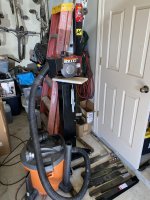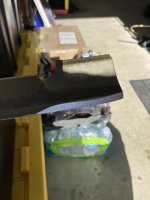Well, let’s summarize here…
End of blades:
So far there is no technical definition for the sharpening limit (apart from cracks, warping or significant material loss), they can be sharpened up to a very subjective evaluation limit.
I would like to see something like this: blades can be sharpen up to the limit of X% of their width and/or Y% of their radius, as they are also insecure or inefficient.
Pre-cleaning:
I think this activity is important, although I agree that dirt occurs equally on both sides of the blade… but in the case of stationary parts where uneven oxidation occurs… does it affect the balance?
I prefer to do the procedure regardless of the case, as I am not a sharpener, I am an enthusiast and time is not an issue for me.
I understand that anyone who works with sharpening should look for a procedure that takes as little time as possible, but without jeopardizing the final result.
Goals:
1 – just lower the height of the lawn (sharpening doesn’t matter)
2 – lower the height of the lawn and leave it healthy and always green (sharpening is important)
Those aiming for #1 can skip this topic, but those aiming for #2 want to know everything about how it's done in the best possible way at their fingertips. Not everyone is going to buy a specific machine to sharpen (for example, me), but knowing how the final result should be, they can do the same (or near) with some expense of time.
Balancing:
I cannot agree with those who ignore balancing, as a piece rotating at more than 3000 RPM, without balancing, contributes to noise and harmful vibrations to the set of pulleys, bearings, increased clearances and previous fatigue.


